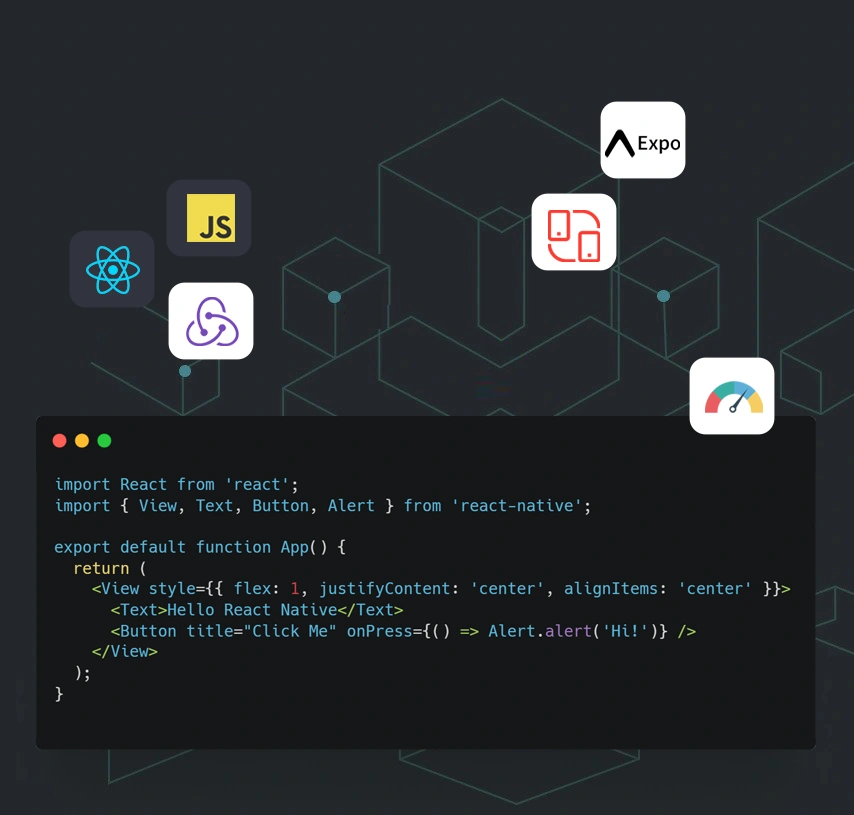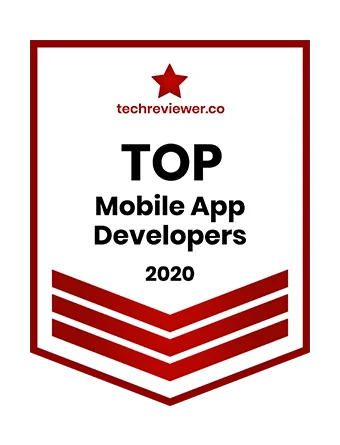The right agency for your project providing success with every solution
600+
Project completed


Project completed
At VOCSO, we create interactive and responsive interfaces using modern frameworks like ReactJS, AngularJS, VueJS and more. Our services focus on delivering exceptional user experiences, including UI/UX design, Single-Page Applications (SPAs), PWAs, and more.
Unlock the power of full-stack development with VOCSO's expertise in MEAN Stack. We build robust and scalable applications that are specifically customized to meet your unique business requirements.
VOCSO crafts robust back-end solutions that are secure, scalable, and high-performing, providing the essential foundation for your web and mobile apps. We prioritize speed, stability, and seamless integration to ensure your applications run flawlessly.
We harness the power of Generative AI development to create intelligent systems that generate creative content, automate tasks, and deliver personalized user experiences through advanced machine learning models.
We offer custom Strapi development services to create flexible, headless CMS solutions. This empowers businesses with API-first content management and seamless integration across all their digital platforms.
We provide professional MERN stack development services to create robust, full-stack web applications with smooth integration between the front-end and back-end using MongoDB, ExpressJS, React, and NodeJS.
We specialize in Retrieval-Augmented Generation (RAG) development to build smart AI solutions that combine retrieval of relevant information with generative capabilities, enabling accurate and context-aware responses for complex queries.
Unleash the power of your data. We provide expert Directus development services to create scalable, real-time data platforms with a user-friendly interface. This empowers you with dynamic content management, directly from your SQL database.
We build robust Single-Page Applications (SPAs) and enterprise-grade web solutions with AngularJS. We also maintain and optimize existing AngularJS applications, creating custom UI elements.
We leverage ReactJS for dynamic, high-performance web applications and cross-platform mobile solutions with React Native. Our focus is on scalable UIs and interactive dashboards.

With a Dedicated Team of experienced React Native Developers at your disposal, you control the whole development experience.
This model provides cost predictability and is ideal for well-defined projects with a clear scope, where changes are minimized, and the project stays within a fixed budget
You pay as you go, leveraging a flexible approach where you're billed for actual hours spent by our React Native Developers.
Let's discuss the right engagement model for your project?
Schedule a call
"Vocso team has really creative folks and is very co-operative to implement client project expectations. MicroSave Consulting had great experience working with Anju and Prem."

"Working with Deepak and his team at Vocso is always a pleasure. They employ talented staff and deliver professional quality work every time."


"I am working with VOCSO team since about 2019. VOCSO SEO & SEM services helping me to find new customers in a small budget. Again thanks to VOCSO team for their advanced SEO optimization strategies, we are now visible to everyone."

"We love how our website turned out! Thank you so much VOCSO Digital Agency for all your hard work and dedication. It was such a pleasure working with the team!"

"It was an amazing experience working with the VOCSO team. They were all so creative, innovative, and helpful! The finished product is great as well - I couldn't have done it without them"

"I want to take a min and talk about Deepak and Vocso team.We have outsourced web projects to many offshore companies but found Deepak understands the web content management and culture of US based firm and delivered the project with in time/budget . Also in terms of quality of product exceeds then anything else on which we work on offshore association I would recommend them for any web projects."

"Hi would like to appreciate & thanks Deepak & Manoj for the assistance any one thats look in to get web design They are very efficient people who can convert a little opportunity to fruitful association."

Understand your requirements and agree on commercials.
Based on thorough discussion and strategy
Add functionalities with plugins and customization
Make your website business ready
Perform complete quality checks and go live
Let's find out the right resources for you
Schedule a callAt VOCSO, we understand that not all mobile apps are built the same. That’s why our React Native stack is strategically selected based on the type of app, expected user experience, and platform requirements. Whether you're launching a lean MVP or scaling a feature-rich product, here’s how we structure our React Native stack to deliver reliable, fast, and future-ready mobile apps for both iOS and Android.
For mobile-first businesses like eCommerce, booking platforms, edtech apps, and media content apps.
UI & Styling: React Native Core + Styled Components + Tailwind CSS for mobile
Navigation : React Navigation (stack, tab, drawer)
State Management: Redux Toolkit or Zustand for global state
APIs & Content: REST or GraphQL with Axios or React Query; powered by Strapi/Directus for CMS
Integrations: Firebase, Razorpay/Stripe, Google Maps, Push Notifications
Deployment: Fastlane + GitHub Actions for automated store publishing
Security: JWT Auth, Secure Storage, biometric auth
For internal team tools, field force apps, data collection, checklists, or report generation.
UI & Styling : NativeBase or Paper UI for rapid enterprise-ready screens
Navigation & State : React Navigation + Context API or Redux Toolkit
APIs : Axios or React Query with secure data access (Role-based APIs via Strapi/Directus)
Offline Support : SQLite or AsyncStorage for offline-first functionality
Native Modules : Camera, Location, File Uploads, PDF Viewer
Deployment : Internal distribution via App Center, TestFlight, or APKs
Security : Device-level encryption, app lock, secure API calls
VOCSO developed a field data capture app for an infrastructure firm with offline mode and secure sync.
For long-term products, multi-role systems, or startups with future plans to go native or scale rapidly.
UI & Styling: Tailored UI Kit with scalable component design
Architecture: Feature-based folder structure + Dependency injection (via React Native Reanimated, Zustand)
State Management: Redux + Persist, or custom hooks for scoped state
APIs : Modular API services with middleware handling; Strapi/Directus as API-first CMS
Integrations : Deep native modules (background sync, analytics, crash reporting)
DevOps : Dockerized environments, GitHub Actions, and OTA updates via CodePush
Monitoring : Firebase Crashlytics, Sentry, and analytics dashboards
VOCSO used this setup to launch a healthcare consultation app with secure logins, real-time chat, and video calling modules.
Choosing between React Native and fully native app development (Swift/Obj-C for iOS, Java/Kotlin for Android) comes down to trade-offs in performance, team skillset, and time to market.
Shared codebase for iOS and Android.
Benefits: Faster development, consistent UI, reusable components.
Use Case: MVPs, startups, or apps with moderate native hardware needs.
Optimized for performance and deep platform integration.
Benefits: Better hardware access, full OS feature utilization.
Use Case: AR apps, advanced animations, system-level integrations.
VOCSO’s Take: We recommend React Native for most business apps to reduce costs and launch faster. Native should be reserved for niche performance-critical use cases.
Choosing the right navigation library is crucial for maintaining user experience and performance on mobile apps.
Flexible and easy to use.
Ideal for: Lightweight apps, quick MVPs, and simpler navigation flows.
Closer to native UX, better performance in large apps.
Ideal for: High-complexity apps with heavy navigation.
VOCSO’s Tip: For most use cases, React Navigation is enough. We move to Native Stack when app size and transition performance become bottlenecks.
Choosing the right state management tool is key to building scalable, responsive mobile apps — whether you're handling global state, real-time updates, or localized logic.
A powerful and opinionated state management solution built for scalability.
Ideal for: Large-scale apps with complex, shared state.
Pros: Centralized state, built-in async support (RTK Query), excellent dev tooling.
Cons: Verbose setup, requires boilerplate for simple use cases.
A minimalist, hook-based state manager ideal for modular state slices.
Ideal for: Lightweight or modular apps needing localized state.
Pros: Simple API, no boilerplate, performant with selective updates.
Cons: Lacks built-in middleware, smaller ecosystem.
React’s native state sharing mechanism for basic, app-wide values.
Ideal for: Small-scale state needs or static values.
Pros: Native to React, easy to implement, no dependencies.
Cons: Re-render issues on deep trees, not optimal for large states.
VOCSO’s Take: Start with Context for basic state, go with Redux Toolkit for scalable apps, and use Zustand when you need speed without overhead.
Achieving a smooth, native-like UX in React Native requires deliberate performance optimization techniques across components and rendering cycles.
React Native’s go-to solution for rendering long lists efficiently.
Ideal for: Efficiently rendering long, scrollable lists.
Pros: Lazy loading, windowing, performance out of the box.
Cons: Requires unique keys, performance drops with complex render items.
Optimize component re-renders using memoization hooks like useMemo etc.
Ideal for: Preventing unnecessary re-renders in functional components.
Pros: Improves speed, avoids heavy recalculations.
Cons: Can add complexity if overused.
Defer costly computations until after interactions complete for a smoother experience.
Ideal for : Deferring heavy operations until after animations/interactions complete.
Pros : Smooth user interactions, prevents UI jank.
Cons : Only defers — doesn’t eliminate costly ops.
VOCSO’s Take : We always profile with tools like Flipper and run tests on real devices. Our practice involves isolating expensive renders and batching updates intelligently, ensuring every UI remains fluid on low-end Android as well as iOS.
Animations boost user experience but choosing the right API ensures performance doesn’t suffer on lower-end devices.
React Native’s built-in solution for basic, declarative animations.
Ideal for: Simple, declarative animations.
Pros: Easy to learn, integrated with React Native.
Cons: Runs on JS thread, may lag under load.
An advanced animation library that runs on the native UI thread for fluid interaction.
Ideal for: Gesture-based, interactive, and performant UIs.
Pros: Native thread execution, low-latency updates.
Cons: Slightly steeper learning curve.
VOCSO’s Take: We use Animated for basic transitions to maintain agility and adopt Reanimated when the UI demands fluidity under interaction-heavy scenarios like swipes, drags, or nested animations.
For apps expected to work in poor or no-network conditions, implementing a robust offline architecture is essential.
A popular middleware for persisting Redux state across sessions.
Ideal for: Persisting Redux state across sessions.
Pros: Auto-rehydrates state, supports storage engines.
Cons: Needs careful setup for sensitive data.
A blazing fast, encrypted key-value storage system built for React Native.
Ideal for: High-performance key-value storage.
Pros: Lightning-fast reads/writes, supports encryption.
Cons: Platform-specific native dependency.
Standard go to tools for simple or structured local data persistence.
Ideal for: Lightweight or structured offline storage.
Pros: Widely used, simple APIs.
Cons: Slower for large or complex datasets.
VOCSO’s Tip : We combine Redux Persist for state caching and MMKV for speed critical use. Syncing queues and retry mechanisms ensure that users don’t lose progress even when transitioning between offline and online states.
Selecting the right deployment toolchain directly affects development speed, CI/CD workflows, and native integration options
A managed development framework offering rapid setup and OTA updates.
Ideal for : MVPs, prototypes, and fast iterations.
Pros : Zero setup, over-the-air (OTA) updates, rich SDK.
Cons : Limited native module integration, dependency on Expo ecosystem.
A raw development approach that offers full native flexibility and control.
Ideal for : Enterprise apps and those needing full native control.
Pros : Full access to native code, custom native modules, flexible tooling.
Cons : More setup, requires native development knowledge.
VOCSO’s Recommendation : We start most apps with Expo to maximize speed and pivot flexibility. When clients outgrow Expo’s limitations, we migrate to Bare Workflow — ensuring CI/CD, native linking, and version control remain seamless.
You delivered exactly what you said you would in exactly the budget and in exactly the timeline. You delivered exactly what you said you would in exactly the budget and in exactly the timeline.






React Native enables cross-platform app development using a single JavaScript codebase, reducing development time and cost. Backed by Meta, it offers near-native performance, rich third-party plugin support, and a robust community — making it ideal for MVPs, enterprise apps, and UI-rich mobile solutions.
Yes. We help businesses migrate from native iOS/Android apps to React Native by reusing business logic, redesigning UI components, and optimizing native integrations. We also ensure feature parity and performance tuning post-migration.
Absolutely. React Native’s cross-platform capabilities allow us to build apps that run smoothly on both Android and iOS with a shared codebase. For platform-specific needs, we implement native modules using Swift, Kotlin, or Objective-C/Java when needed.
For navigation, we use React Navigation for stack, tab, and drawer flows. For state management, we prefer Redux Toolkit, Zustand, or Context API, depending on complexity. We modularize state, handle async flows with Thunk/Saga, and persist state using Redux Persist.
The cost of React Native development at VOCSO varies based on your project’s complexity, scope, and feature requirements. We start by thoroughly understanding your needs and then offer a customized quote that fits your goals and budget—ensuring transparent pricing with no hidden fees.
We use FlatList for long lists, memoization (useMemo, React.memo) to avoid re-renders, and InteractionManager to defer heavy tasks. We also profile using Flipper, reduce bundle size with dynamic imports, and batch state updates to ensure smooth UIs even on low-end devices.
We implement mobile-specific security practices such as secure storage (Keychain/EncryptedStorage), biometric auth, HTTPS enforcement, and code obfuscation. We also secure API communication using OAuth2/JWT, SSL pinning (if required), and data encryption at rest and in transit.
Yes. We connect React Native apps to custom databases by developing a secure API layer—often using NodeJS, Python, or other backend technologies—to facilitate smooth communication between your app and database. When needed, we also use tools like Directus or Strapi to quickly create REST or GraphQL APIs that integrate seamlessly with your React Native frontend.
Yes. We configure CI/CD pipelines using GitHub Actions, Bitrise, or Fastlane. We handle builds for Android (APK/AAB) and iOS (via TestFlight or App Store), set up staging environments, automate testing, and manage over-the-air (OTA) updates using CodePush or Expo Updates.